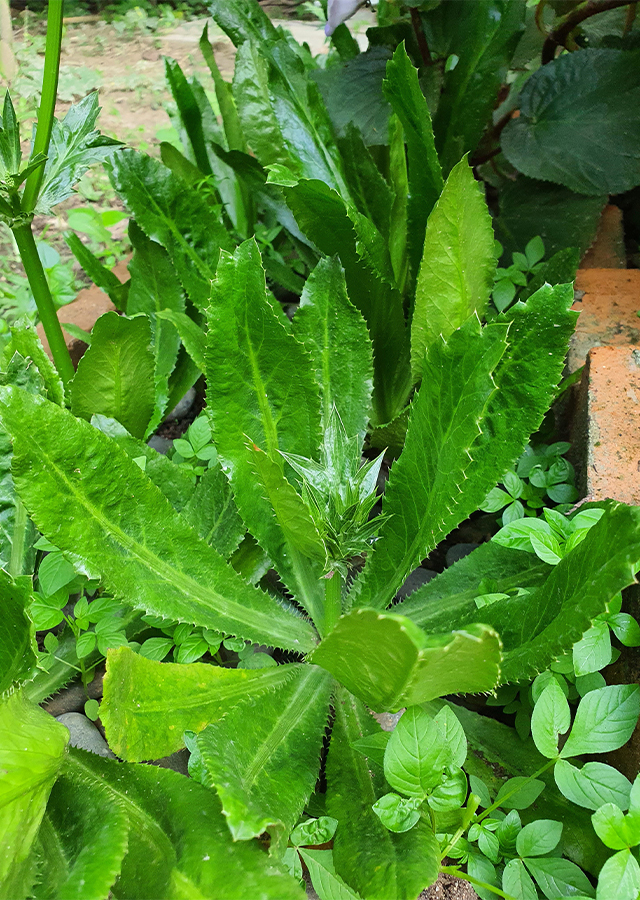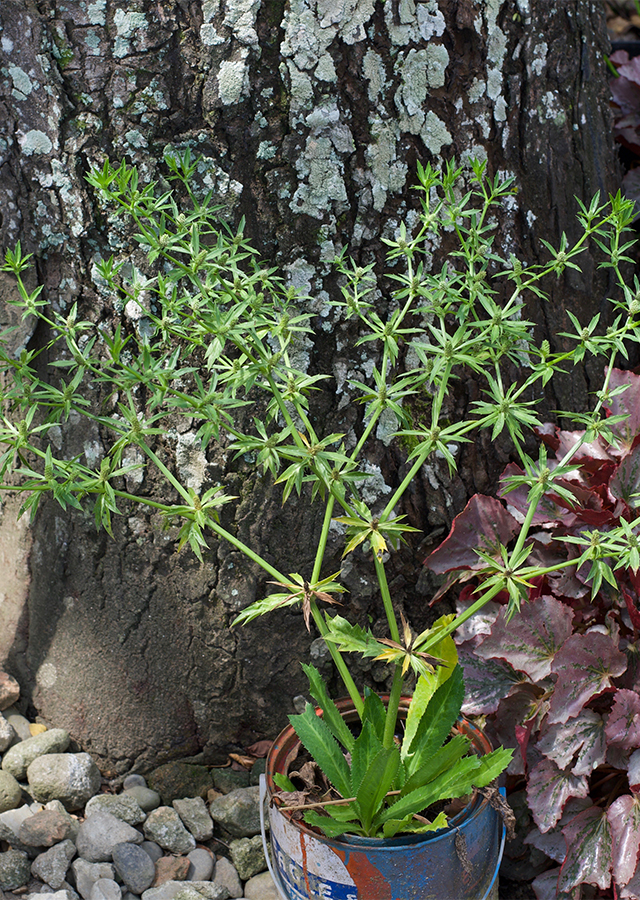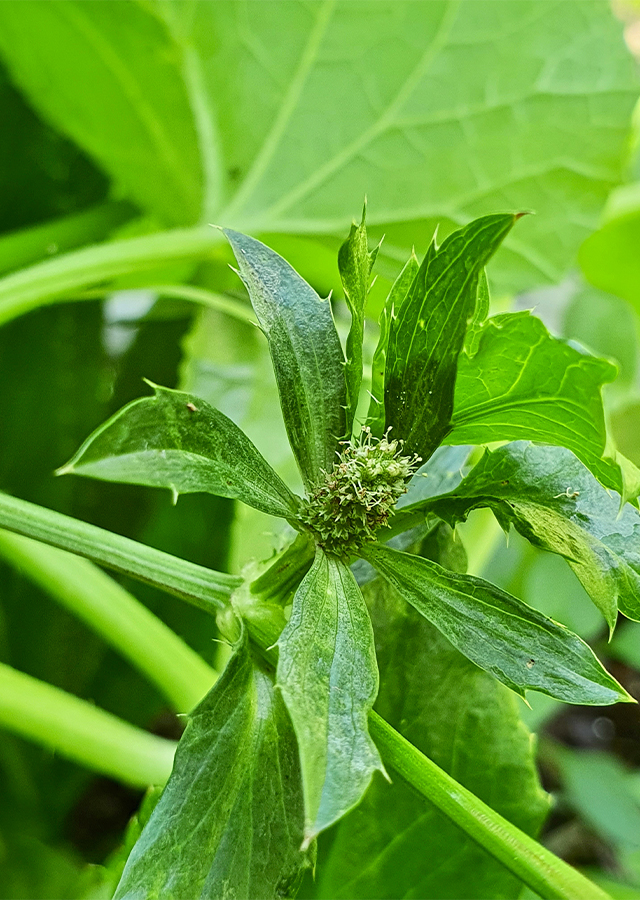Sawtooth Coriander
Eryngium foetidum L.
Apiaceae
Location in our garden
Principal



Synonym
Eryngium antihystericum Rottler
Habitus
Herbaceous. An erect perennieal herb, grows up to 80 cm tall.
Part Used
Leaves
Seeds
Roots
Growing Requirements
Full Sunshine
Need Shade
Habitat
Forest
Roadside
Rocky Areas
Grassland
Overview
There is no recognition of the sources of sawtooth coriander, but it is native to Central and South America. It has been introduced into the tropics of Florida and the Old World, where it has naturalized in several areas. As a replacement for coriander, it was introduced into South-East Asia by the Chinese; it is recognized in Indo-China, Peninsular Malaysia, Java, and Sumatra. In Central and South America, it is also cultivated.
Vernacular Names
Ketumbar jawa (Malaysia), Coriandre longe (French), Langer Koriander (German), Ci yan sui (Chinese), Phakchi-farang (Thai), Ngo gai (Vietnamese), Bahkhawr (India), Stinkdistel (Dutch), Hozzu koriander (Hungarian).
Agroecology
Plants prefer partially shaded and moist soils that are not too dry, e.g. in meadows, gardens, waste places, along roadsides and forest edges, up to 1700 m altitude from the lowlands. Generally, plants do not grow closely together, but appear as individual weeds.
Morphology
- Root - a branched, fusiform taproot.
- Stem - until flowering, the stem grooved, elongating and regularly dichasially branched into separate spreading branches at the tip.
- Leaves - simple, subsessile to petiolate, when young, in a radical rosette with a foited smell when bruised; sometimes disappearing rosette in older plants; lanceolateobovate to spatulate-oblong blade, 5-32 cm ⁇ 14 cm, narrowly sheated base, spiny serrate margin
- Flowers - flower heads cylindrical ca 1.5 cm long, green, subtended by a whorl of 5- 6 unequal bracts.
- Fruit - ovoid-obovoid schizocarp, up to 1.5 mm × 0.75 mm, densely tuberculate.
Cultivation
- Propagation by seed or vegetative by sucker division.
- Seeds, either in situ or in a nursery seedbed, are best sown as soon as they are ripe.
Chemical Constituents
- Flavonoids, tannins, saponin, triterpenoids, sterols, carotol, β-farnesene, anethole and α-pinene.
Traditional Medicinal Uses
- Extracts of leaves from E. Antibacterial property, total phenolic material, operation of DPH radical scavenging, anti-inflammatory and analgesic properties of foetidum.
- Anthelmintic, anti-convulsant anthelmintic.
- A decoction of the whole plant is used to treat haemorrhages and as an antimalarial agent.
- The plant is boiled and the water is used as a medicinal bath or as a chicken pox and measles remedy.
- The leaves are laxative-febrifuge.
- As a child's purgative, an injection is used to treat chills, measles, fevers, head colds. As a cure for children's leprosy and infant convulsions, a decoction of the crushed leaves is used.
- To relieve hydropsy and stomach pain, an infusion is used.


